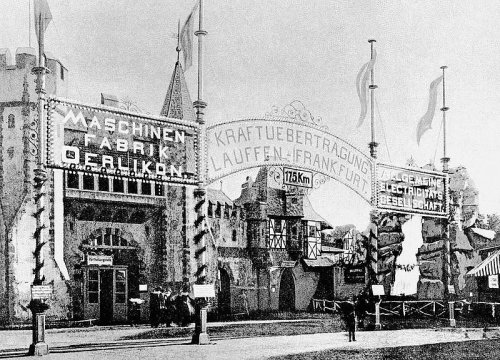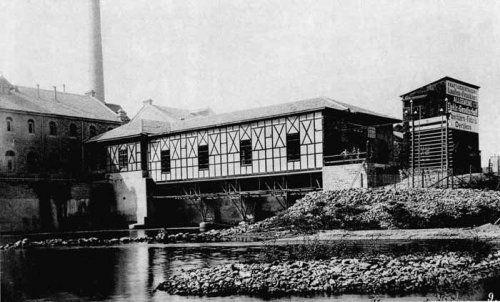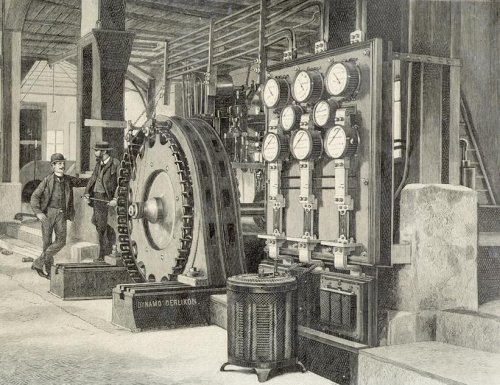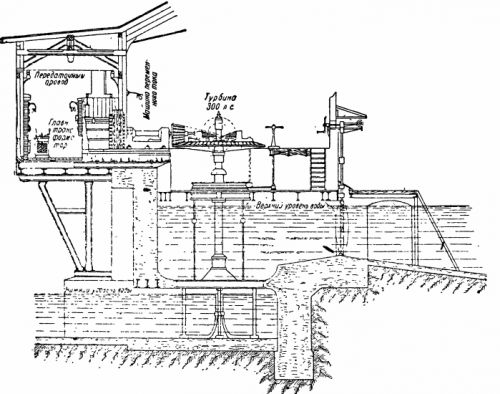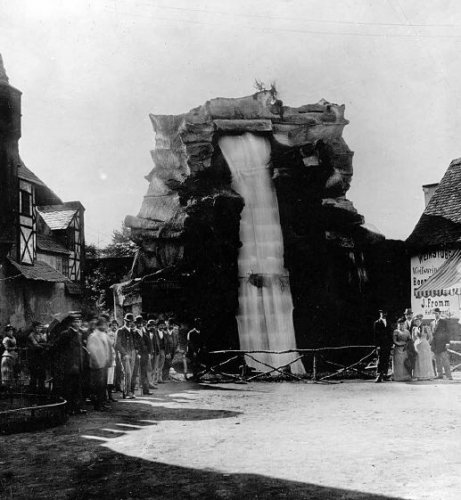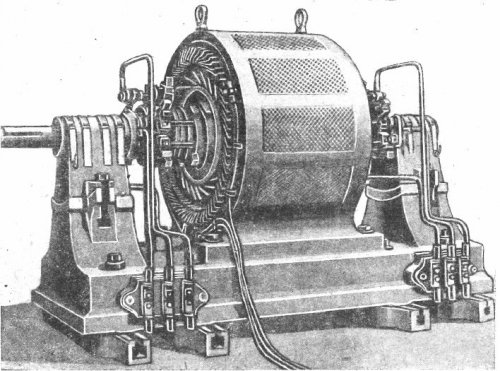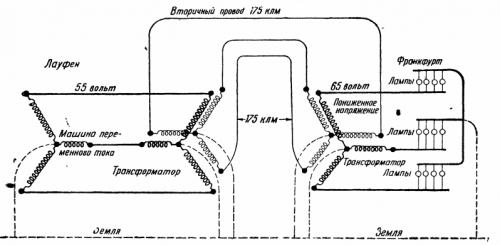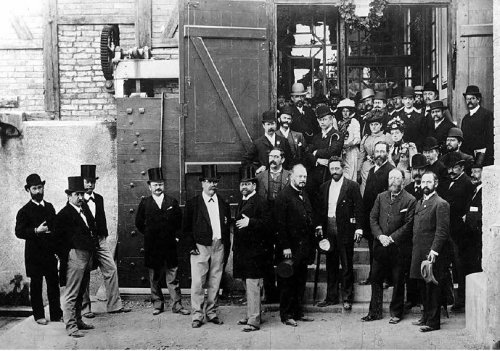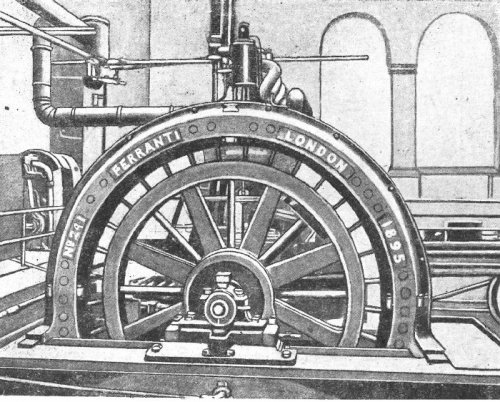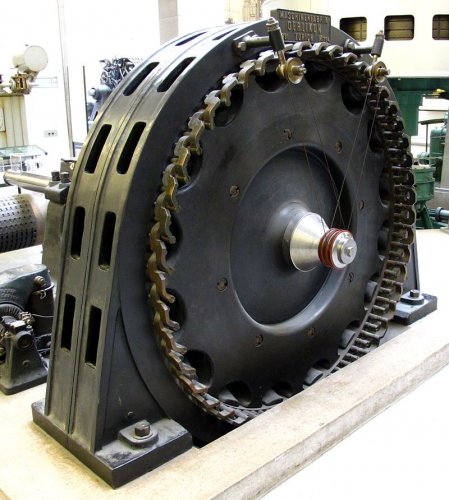The first ever three-phase transmission from Laufen to Frankfurt
The most general and first technical embodiment of the principles underlying AC technology was the famous Laufen-Frankfurt transmission, which is so important for the creation and development of the whole AC technology.
At a distance of 175 km from Frankfurt am Main (near the city of Heilbronn) in the city of Laufen there was a small cement factory that used the energy of the Neckar River for its energy needs. In 1890, the idea of power transmission in Frankfurt arose and the German industrialist and inventor Oskar von Müller (1855 — 1934) began to negotiate with various companies on this matter.
At the end of the year it was decided that the cement plant would supply its turbine to Neckar for this, Maschinenfabrik Oerlikon would supply a generator to Laufen, and the General Electricity Company (AEG) an electric motor to Frankfurt.
The transmission line from Laufen to Frankfurt was produced jointly by the two companies, but from the first steps the electrical engineering had to face certain difficulties.Oscar von Miller and other promoters of this business had to overcome a number of obstacles set up by landowners and businesses.
The Russian inventor Mikhail Osipovich Dolivo-Dobrovolsky (1861 — 1919) worked in the AEG company from 1887. While in this company, M. O. Dolivo-Dobrovolsky completed his famous work on three-phase current, which made the author world famous and revolutionized the technique of using and transmitting electrical energy.
He received several patents for three-phase transformers, motors and generators. It is also interesting to note: its transformer design has been preserved until recently practically without fundamental changes.
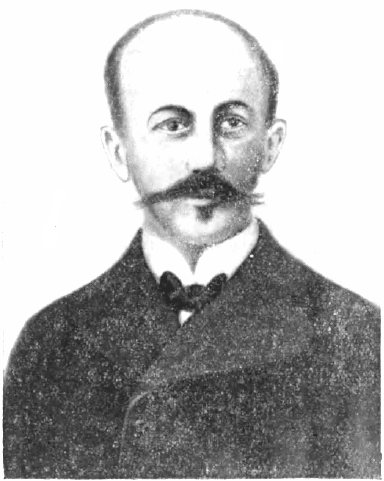
M. O. Dolivo-Dobrovolski
It was Dolivo-Dobrovolski who first drew attention to a technical solution leading to significant savings in copper power lines - the use of three-phase lines for alternating current transmission systems. Thanks to him, a new stage in the company's development began. AEG, which turned out to be the monopoly holder of the most important patents in the field of a new current system.
The mainstream scientific, technical press and engineering circles at the time reacted negatively to the transmission project and predicted that only 5% of the energy would reach Frankfurt. There was much concern about the fate of the phone lines. In general, the first three-phase transmission met with the same hostile resistance as the first railways, the first direct current transmission, and so on.
However, the line is built. It consists of three copper conductors suspended on poles at a height of 8 m. A three-phase overhead line required about 3,000 poles, 9,000 oil insulators and 60 tons of 4 mm diameter copper wire. The airline was mainly operated by rail.
The current is transmitted under a voltage of 8500 V (two more series of experiments were then carried out in which the voltage of the transmitted current increased to 15000 and 25000 V) from Laufen in Frankfurt am Main. The three-phase power line was launched in Frankfurt during the International Electrotechnical Exhibition in 1891. This exhibition demonstrated three-phase current as a new system for the first time.
The entire transmission was designed and built by AEG and Maschinenfabrik Oerlikon under the direction of Oskar von Miller and Mikhail Osipovich Dolivo-Dobrovolsky. The transformer installation, generators and oil insulators were designed by Charles Brown Jr. (1863 — 1924), a designer and engineer, inventor and entrepreneur who left a bright mark in the history of technology.
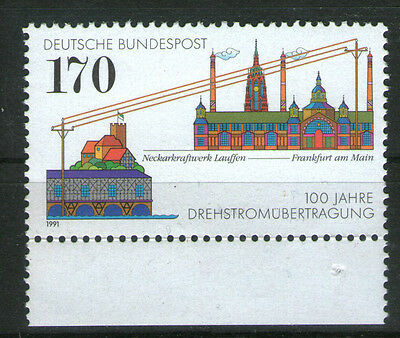
The official launch of the first high-voltage three-phase electric power transmission at the International Electrotechnical Exhibition took place on Tuesday, August 25, 1891, at 12 noon. The first test launch ended a few days earlier.
At Laufen, a turbine feeds a three-phase Braun generator. This is a typical car from the 90s. XIX century, one of the first three-phase generators. Here the electromagnet rotates in front of the stationary armature that surrounds it.
The armature consisted of 96 rods interconnected in three windings, in each of which the current changed with a phase shift of 120 °. The stator current at full load was up to 1400 A, which required the use of thick copper rods with a diameter of almost 30 mm and heat-resistant insulation using asbestos pipes.
The excitation current supplied by the batteries is supplied to the rotor through two copper wires which are attached to roller rings at the front of the generator to the axle. The generator is rated at 150 rpm.The frequency of the three-phase alternating current was 40 Hz.
This generator provides a current of 55 V, which is boosted by a transformer. In Frankfurt, another transformer stepped down to 65 V. Two oil-cooled transformers were used, one 100 kVA from AEG and another 150 kVA from Maschinenfabrik Oerlikon.
Train station in Laufen
At an electrical exhibition in Frankfurt, the current is driven by a 100 hp three-phase Dolivo-Dobrovolsky motor. village, which operated a hydraulic pump that supplied water for the brightly lit ten-meter decorative waterfall.
It was the most powerful three-phase asynchronous motor in the world at the time. In addition, the exhibition was illuminated by 1,000 incandescent electric lamps. These lamps surrounded a sign in the center that read: "Laufen-Frankfurt Power Line". Below is the length of the line - 175 km, and on the side - the names of the companies that conducted the experiment - "Oerlikon" and "AEG".
Dolivo-Dobrovolski electric motor
Laufen-Frankfurt transmission scheme
The Laufen-Frankfurt transmission has been widely studied. An expert committee carried out detailed tests of the machines.
The conclusions of this commission are as follows: the transmission of electrical energy over a distance of 170 km by alternating current at a voltage of 8500 V with bare copper wire delivers 68.5% to 75.2% of the energy generated at Laufen to Frankfurt. Transmission losses were limited by the resistance of the wires. The effect of capacity was completely negligible. The transmission was as smooth, safe and correct as at a voltage of several hundred volts and a distance of several meters.
This conclusion was of great historical importance, because through the Laufen-Frankfurt transmission it combined all the connections of the new electrical engineering, including a three-phase generator and motor, a transformer and high-voltage AC voltage.
Charles Brown's three-phase dynamo showed an efficiency of 93.5% according to verification commission documents. the load was 190 liters. c. The efficiency of the transformers is 96%.
The principle of converting mechanical energy into electricity and converting electrical energy back into mechanical energy, the principle embodied in the revolution produced by electricity, was given an adequate form in alternating current technology. AC technology itself, beginning with this transmission, developed under the form of three-phase electrical engineering.
At the congress, which was held simultaneously with the exhibition, M. O. Dolivo-Dobrovolsky made a large report in which he outlined the foundations of the theory of three-phase current circuits. His speech served as the starting point for many subsequent theoretical works and developments in this new industry.
The most important event of the exhibition was the "1891 International Congress of Electrical Engineers at Frankfurt am Main", which took place during the week of September 7-12.
Visit of the power plant in Laufen by the participants of the International Congress of Electrical Engineers. Charles Brown (top row fourth from right). Foreground: Emile Rathenau (6th left) Marcel Despres (7th left), Gisbert Kapp (behind the two above), Dr. John Hopkinson (8th left), just behind him — Peter Emile Huber , William Henry Preece (2nd from right), Postmaster Friedrich Ebert (1st from right).
The final point in the work of the Frankfurt exhibition was set by a detailed two-volume "official report", in all details reflecting its organization, work and press coverage.
Alternators have been built by Gram and other designers since the 1970s. XIX century. In the 1980s, many new designs appeared (Cypernovsky, Morday, Forbes, Thomson, Ferranti, etc.).
Ferranti's car
The Italian professor Galileo Ferraris and an American engineer from Serbia did the most to understand the reasons for the rotation of the magnetic field. Nikola Tesla… Independently of each other, they reached similar results. Almost simultaneously, in 1888, they reported on their work. Nikola Tesla describes various polyphase systems. However, he also considers two-phase to be the most suitable.
It was adopted in the Niagara hydroelectric plant, which was huge for its time, built in America, as well as in several other installations in Europe. However, shortly after the first transfer of three-phase current from Laufen to Frankfurt, the three-phase systems common in Europe proved their advantages and forced the Americans to convert the "Tesla systems" to three-phase current.
In the 1990s, they switched from single-phase alternating current generators to multiphase. In this case, the main credit belongs to Dolivo-Dobrovolsky - before him they used a cheap connection of single-phase machines.
After the exhibition, the generator was used to power Heilbronn, which thus became the first city in the world to receive three-phase power. The original generator is currently housed in the Deutsches Museum in Munich.
Laufen generator in the museum
We can safely say that in the period from 1888 to 1891all the basic elements of a three-phase electrical system were developed, which have fully retained their significance and are widely used and developed today.
The transmission of electrical energy from Laufen to Frankfurt am Main convincingly demonstrates the possibility of a fundamental solution to the complex problem of centralized electricity production and its transmission over long distances.
The importance of the exhibition in Frankfurt also lies in the fact that it had a huge impact on public opinion. Contemporaries regard the Frankfurt exhibition as a decisive turning point in the history of electricity supply. Electrical engineering is becoming a leading technology. AC companies emerged as the winners, and DC-only companies urgently began acquiring licenses for AC technology.
Emil Rathenau summed up the success of transmitting energy over such a great distance: "Recent advances will enable us to build magnificent energy-producing centers everywhere—in the mountains and on the seashore, to harness the energy of mountain streams and tides, and at the most - the great river rapids — to transform them, hitherto a waste of energy, into useful electricity, to transport it to any distance, and there to distribute and use it in any way. »
With the pilot transfer of three-phase alternating current from Laufen to Frankfurt in 1891, all modern electrification began.

